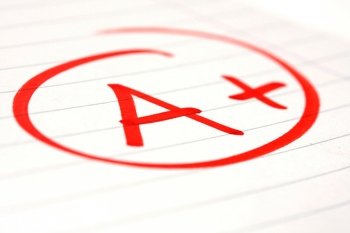The nice thing is you don’t need to have knowledge of the program to be able to help design it (and then write the grant). But you do have to be able to draw it from the muddled, over-worked brains of your content experts.
Here are the basic pieces of an application/ project design most funders ask for—and even if they don’t specifically ask, impress them by including it; you’ll want to know the answers to these areas for yourselves when implementing the grant anyway.
- Need Statement. This is the section where you describe who you are going to serve, and why you need to serve them. You’ll be dropping data here like a mad gardener dropping wildflower seeds, and you want to show why your need is dire. Example: “The quality of writers graduating from American high schools and colleges today is abysmal. In 2012, the business sector of our nation’s economy spent more than $5 billion on training to improve the writing skills of their CEOs, and Amazon.com was overwhelmed with more than 150,000 mediocre, self-published novels. The result of this wretched shortcoming is 1) a reduction in U.S. exports of professional writers to the tune of $10 million per quarter in lost tax-revenue, and 2) a 50% hair-loss in readers due to tearing of said hair from reading poorly written books. The Writers Reaching Incredible Talent Expansion (WRITE) project seeks to remedy this problem through its innovative activities in order to restore both revenue and hair in our great nation.”

- Goal(s). Seems self evident; do I need to explain? Only that a goal is a big-picture, long-term outcome, not super specific—that comes with the objectives. Example: “Goal—to make the U.S. an international leader of literary brilliance in both fiction and non-fiction.”
- Objectives. These should be “SMART”. Specific, measureable, attainable, related to goal, and time sensitive. Example: “Objective 1—80% of all the nation’s CEOs will be able to write a complete sentence by the end of 2015.”
- Management Plan. This part of an application is the real meat of a grant project. You’ll describe the activities, who will do them, by when, and what the expected outcomes will be from the activity. I usually create a table, with my Objective, then all activities related to that specific objective, and the other elements laid out in a clear way. Example: (imagine this in table form with four columns and a header with the Objective) “Activity—Provide one-on-one editing support to all self-publishing authors. Responsible Party—WRITE staff. Timeline—each and every day through 2014-15. Outcome—all self-published authors learn sentence construction and grammar.”
- Sustainability Plan. Here’s where you say how you’ll be able to continue the program or its positive effects long after the grant funding has run out. Example: “WRITE creates a ‘training-the-trainer’ structure so when initial funds are expended, ‘trainer’ CEOs will in turn train newbie CEOs in the art of literacy. The result is an exponential increase in U.S. CEOs able to write coherently, with no additional program cost.”
- Dissemination Plan, a.k.a how you are going to shout your triumphs from the roof-tops. Example: WRITE creates a robust plan to disseminate project methods and outcomes. Staff will Tweet every 24 hours; create a FB, LinkedIn, and Google+ page; purchase a full-page ad in the New Yorker each week, and present at each regional writer’s conference in the U.S. during 2015-16.

You can use these headers to create a case-statement which you can then refer to for each grant application you submit—no need to reinvent the wheel each time because you have all the information at your finger-tips.
Your homework (if you are wanting to practice your grant-writing skills) is to choose a fictional or actual issue, and create a project design that addresses it using the steps above. Grading will be on a curve.
For more on grant writing, see Part II, Part III, and this one about types of projects likely to be funded.
